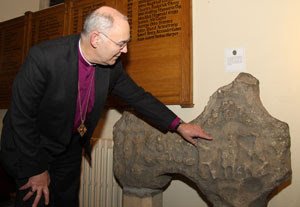“Progress in intimacy with God means progress towards silence.” (Richard J Foster).
How can we make space for God during this busy Advent season? One way is be silent! In ‘The Big Silence’ - a three part BBC documentary broadcast recently, a group of five busy professionals (only one of them a Christian) found God in incredibly deep ways through spending time in silence at a monastery. But the hardest challenge they faced, was making space for silence once they were back home.
St Beuno’s, the monastery where part two of ‘The Big Silence’ was filmed, was the home of the famous poet and Jesuit priest, Gerard Manley Hopkins. Many of my books grow out of the soil of silence written either at home or while staying at my local Anglican convent. But you don’t have to visit a monastery or convent to find some silence. Here are some suggestions:
- Switch off the radio, TV, cell phone and computer etc.
- Go for a walk.
- Sit in the garden. (Even better build a shed or poustina in your garden)
- Wear ear plugs!
- Put on your headphones but don’t switch on your iPod. Folk then leave you alone because they think you’re listening to music!
- Use your car as a sacred bubble. I often travel for hours on the motorway in silence as preparation for an event I’m about to lead. If you travel by public transport, then the ‘pretend headphones’ technique works well!
Let’s try a few minutes silence now:
In order to find the pathway that leads to intimacy with God, we need to discover the gift of silence, for it is in the silence of the heart that God speaks.
So let’s spend a few minutes just enjoying the silence… You might like to close your eyes…Don’t worry if thoughts or distractions pop into your mind – that’s quite normal… Simply visualise yourself placing them to one side like piles of papers (you can always pick them up later if you choose to)… Now try to ‘tune out’ the noise and clutter of life and ‘tune in’ to the stillness and peace...
Silence is...
A space in time to retreat.
A place to grow, to be watered and fed.
To learn only those things
that flourish
in its soil.
from ‘The Pilgrim Heart’ Liz Babbs
































